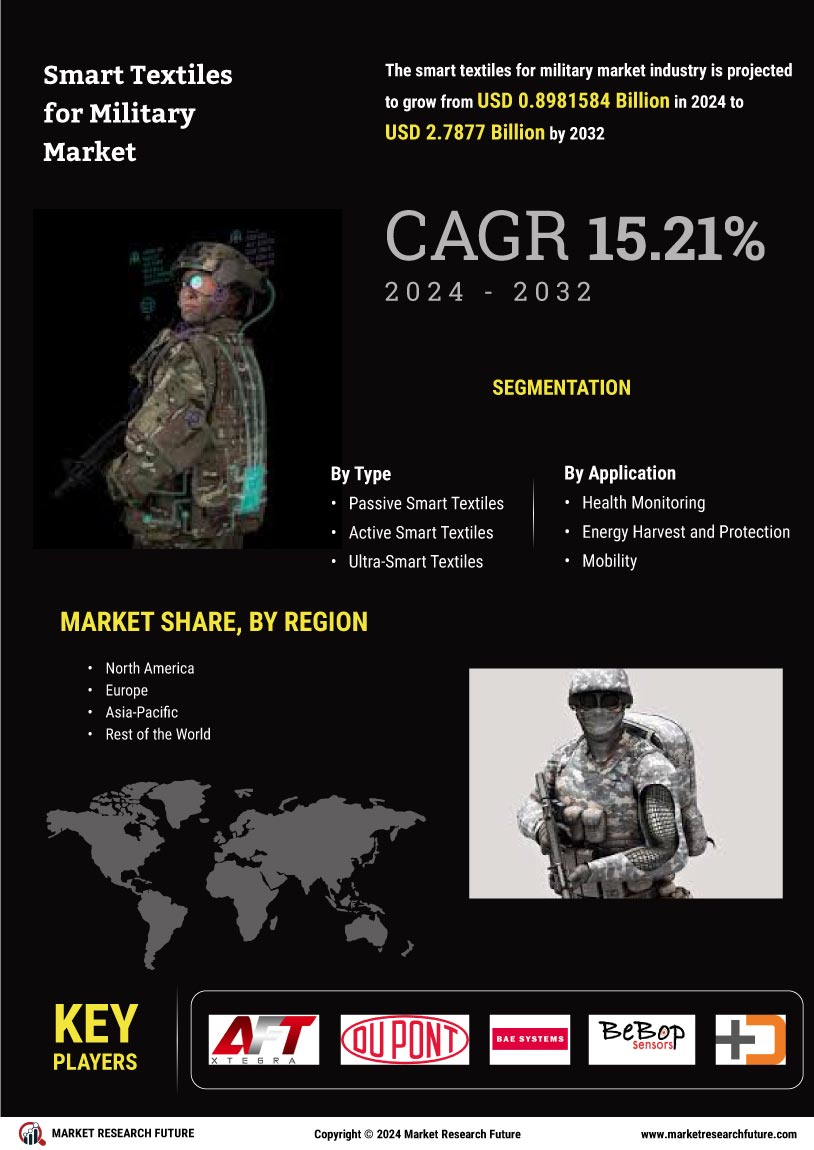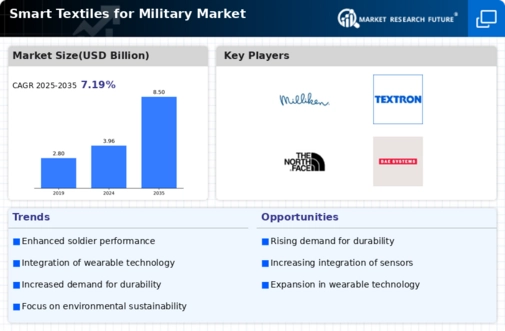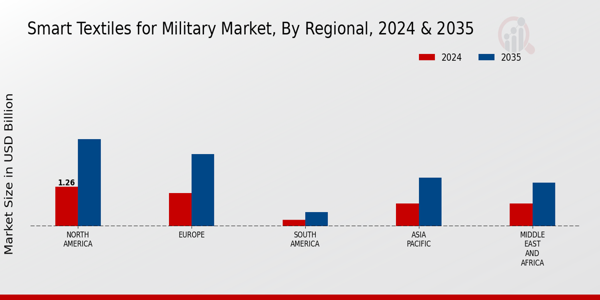Increased Defense Budgets
Global military expenditure has been on the rise, with many nations increasing their defense budgets to enhance their capabilities. This trend significantly impacts the Global Smart Textiles for Military Market Industry, as governments seek innovative solutions to improve soldier safety and efficiency. For instance, the United States has allocated substantial funds for research into smart textiles, recognizing their potential to revolutionize military uniforms and equipment. As defense budgets grow, the market is projected to reach 8.5 USD Billion by 2035, indicating a robust investment in advanced textile technologies that can provide tactical advantages.
Market Growth Projections
The Global Smart Textiles for Military Market Industry is projected to experience substantial growth over the next decade. With a market valuation of 3.96 USD Billion in 2024, it is expected to reach 8.5 USD Billion by 2035, reflecting a compound annual growth rate (CAGR) of 7.19% from 2025 to 2035. This growth is driven by various factors, including technological advancements, increased defense budgets, and a focus on soldier health and safety. The market's expansion indicates a robust demand for innovative textile solutions that enhance military operations and personnel effectiveness.
Sustainability Initiatives
Sustainability is becoming a critical consideration in military procurement, influencing the Global Smart Textiles for Military Market Industry. Many armed forces are seeking eco-friendly materials and production methods to reduce their environmental footprint. This shift towards sustainability not only addresses environmental concerns but also aligns with the increasing public demand for responsible military practices. As a result, manufacturers are exploring biodegradable and recyclable materials for smart textiles. This trend is likely to contribute to the market's growth, as sustainable practices become integral to military operations and procurement strategies.
Technological Advancements
The Global Smart Textiles for Military Market Industry is experiencing rapid technological advancements that enhance the functionality and performance of military gear. Innovations in materials science, such as the development of conductive fibers and nanotechnology, allow for the integration of sensors and communication devices directly into textiles. This integration enables real-time monitoring of soldiers' health and environmental conditions, potentially improving operational effectiveness. As of 2024, the market is valued at approximately 3.96 USD Billion, reflecting a growing demand for these advanced solutions. The ongoing research and development efforts suggest that this trend will continue, driving further investment in smart textiles.
Emerging Markets and Globalization
The globalization of the defense industry is opening new avenues for the Global Smart Textiles for Military Market Industry, particularly in emerging markets. Countries in Asia-Pacific and Latin America are investing in modernizing their military capabilities, which includes adopting advanced textile technologies. As these nations seek to enhance their defense systems, the demand for smart textiles is expected to rise. This trend is supported by the increasing collaboration between nations and defense contractors, facilitating the exchange of technology and expertise. The expansion into these emerging markets could significantly impact the overall growth trajectory of the smart textiles sector.
Focus on Soldier Health and Safety
There is a growing emphasis on the health and safety of military personnel, which is driving the demand for smart textiles. The Global Smart Textiles for Military Market Industry is increasingly focused on developing materials that can monitor vital signs, detect chemical agents, and provide thermal regulation. For example, textiles embedded with biosensors can alert commanders to a soldier's physiological status in real-time, potentially saving lives. This focus on health and safety aligns with the projected CAGR of 7.19% from 2025 to 2035, as military organizations prioritize the well-being of their personnel through innovative textile solutions.
















Leave a Comment